The Mobile CPU Core-Count Debate: Analyzing The Real World
by Andrei Frumusanu on September 1, 2015 8:00 AM EST- Posted in
- Smartphones
- CPUs
- Mobile
- SoCs
Hangouts Launch
The duration of the test this time is only 3.6 seconds. During the initial application launch, we don't see much activity on the little cores. Cores 1-3 are mostly power-gated and we see that there's little to no threads placed onto the cluster during that period. Once the app opened, we see the threads migrate back onto the little cluster. Here we see full use of all 4 CPU cores as each core has threads placed on it doing activity.
This is the perfect burst-scenario for the big cores. The application launch kicks in the cores into high gear as they reach the full 2.1GHz of the SoC. We see that all 4 cores are doing work and have thread placed on them. Because of the fine granularity of the load, we see the CPUs rarely enter the power-gating state in this burst period as the CPU Idle governor prefers the shallower WFI clock-gating state. As a reminder, on the Exynos 7420 this state is setup for target residency times of 500µS.
In general, the workload is optimized towards 4-core CPUs. Because 4x4 big.LITTLE SoCs in a sense can be seen as 4-core designs, we don't see an issue here. On the other hand, symmetric 8-core designs here would see very little benefit from the additional cores.


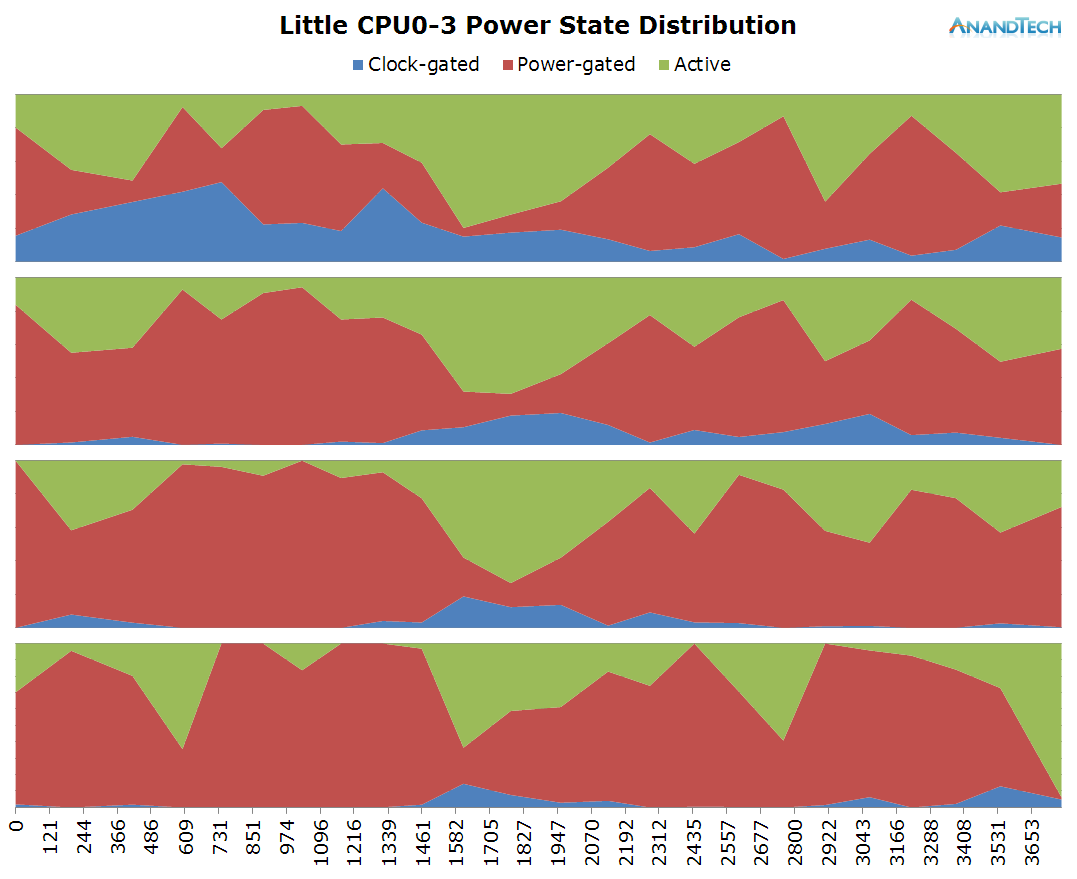

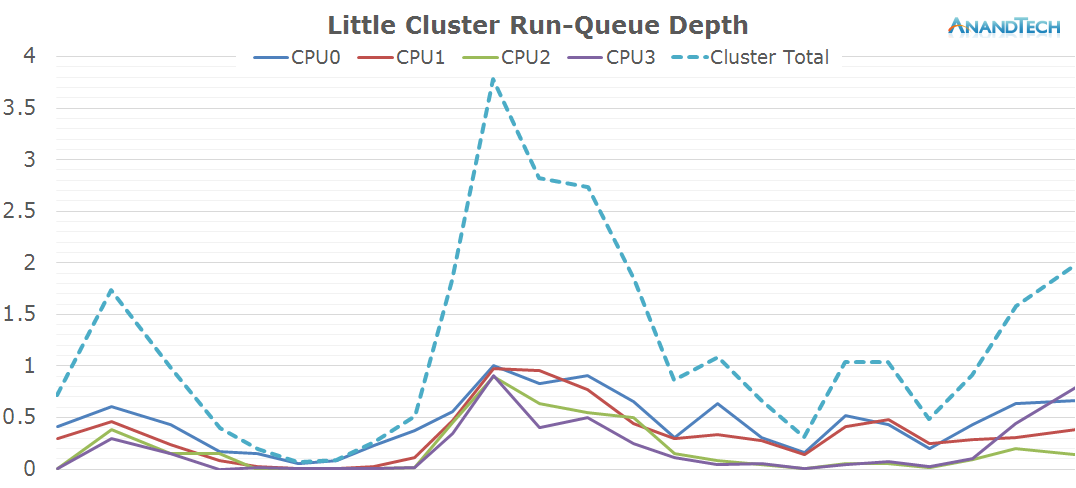
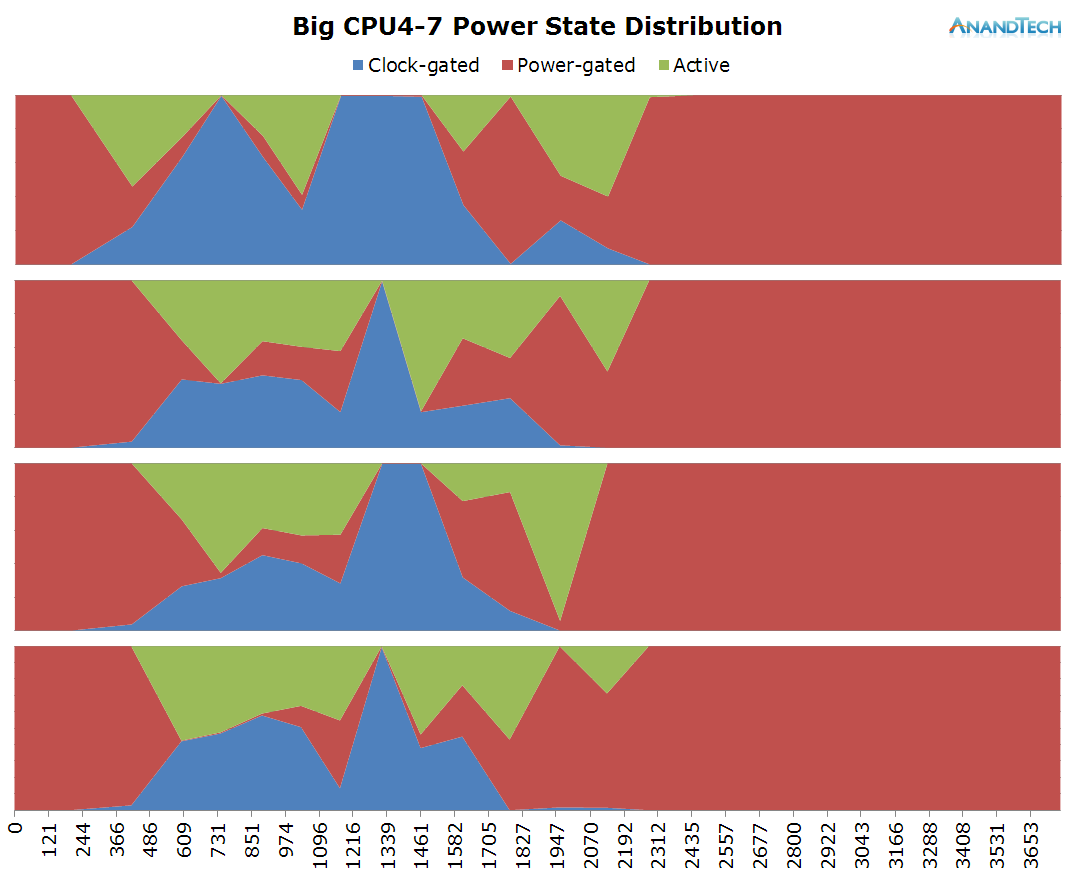
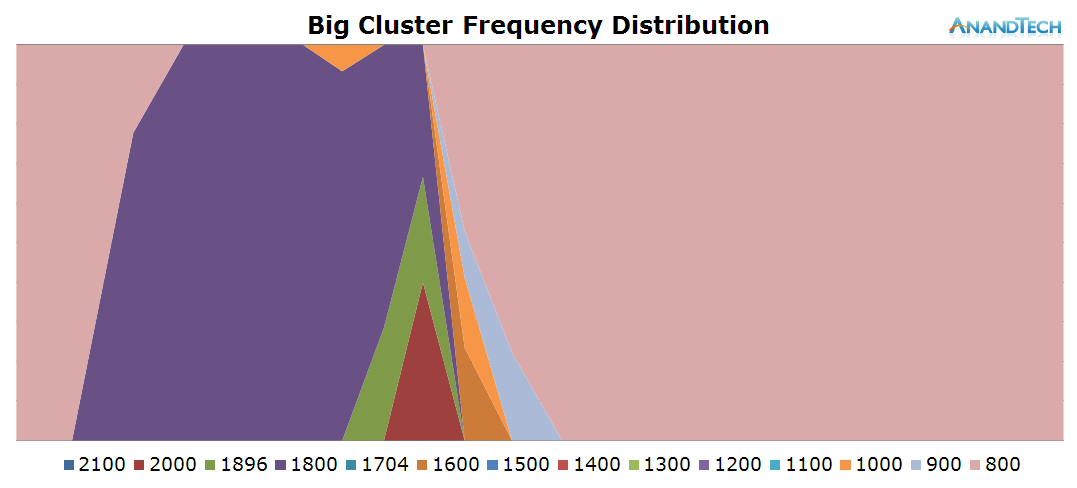
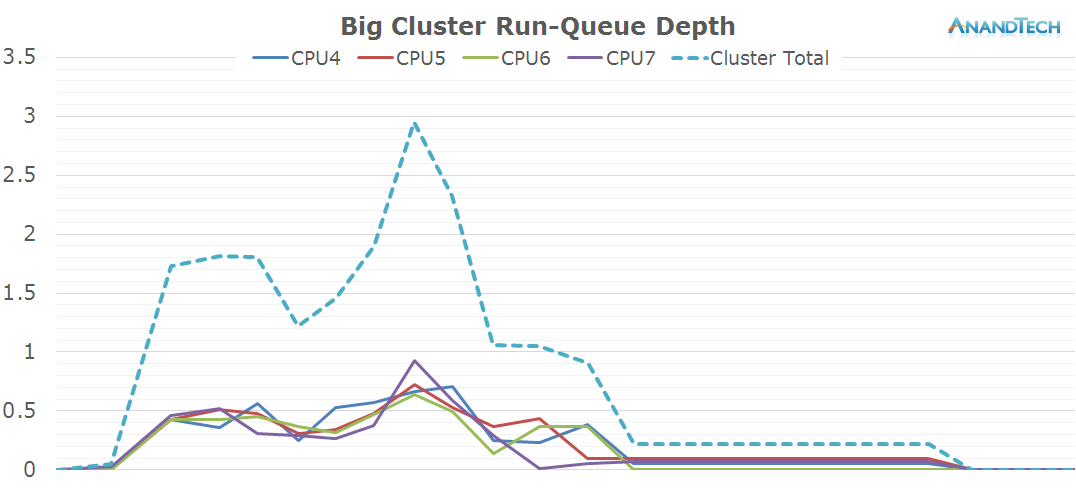
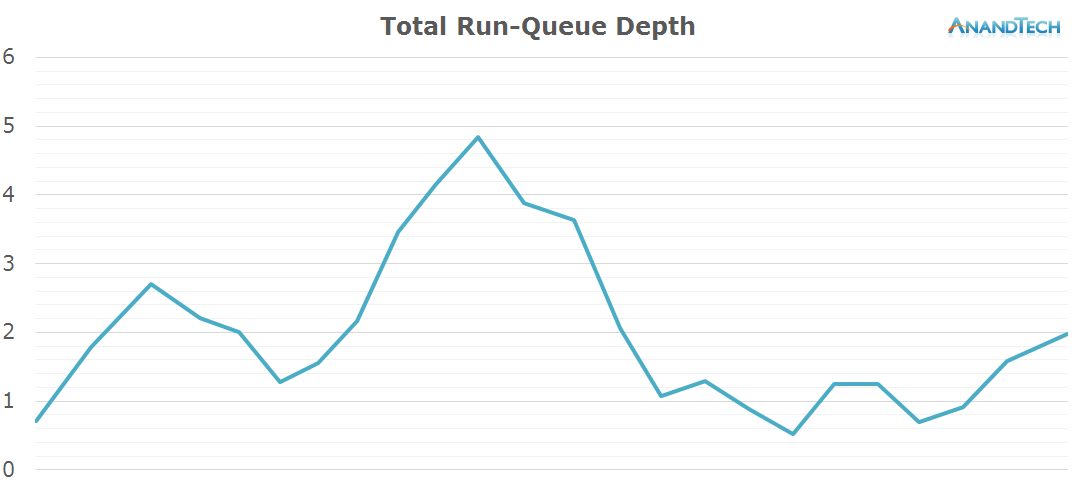








157 Comments
View All Comments
lilmoe - Tuesday, September 1, 2015 - link
"if the interest is high enough":/ Really?
zaza - Saturday, September 5, 2015 - link
Yes Please. It would be nice to see if the same or similar tests works on snaprdagon 810,801 and 615 and Mediatek chips, and intel SoCerchni - Thursday, September 17, 2015 - link
A follow-up with synthetic would be quite interesting.aryonoco - Saturday, September 5, 2015 - link
I just wanted to reiterate the point here an thank the author for this great piece of technical investigative journalism.Andrei, thank you for this work. It is hugely invaluable and insightful.
tipoo - Tuesday, September 1, 2015 - link
Very interesting article. Seems like the mantra of "more cores on mobile are just marketing" was wrong in terms of Android, seems to dip into both four core big and little clusters pretty well. That puts the single thread performance having lagged behind the Apple A series (up until the S6 at least) in a new light, since it can in fact use the full multicore performance.tipoo - Tuesday, September 1, 2015 - link
*That is, barring gaming. More core Android functions do well with multithreading though.jjj - Tuesday, September 1, 2015 - link
In gaming there is a big advantage. By using mostly the small cores you allow for more TDP to go to the GPU. One more relevant thing would console ports in the next couple of years when mobile GPUs will catch up with consoles. The current consoles have 8 small cores and that fits just right with many small cores in Android.retrospooty - Tuesday, September 1, 2015 - link
Not really sure whos "mantra" that was. People that don't understand what the big.little architecture is like some angry Apple fans?tipoo - Tuesday, September 1, 2015 - link
Well sure, whoever they were, but it was a pretty common refrain for every 8 core SoC.soccerballtux - Tuesday, September 1, 2015 - link
for one, it was my mantra. I liked having 4 cores because 2 wasn't enough, but according to my hotplugging times, I only really need 3 for optimal experience most of the time